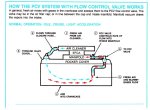- Joined
- Dec 1, 2024
- Messages
- 135
- Points
- 101
- City
- Mexico
- State - Country
- N/A
- Vehicle Year
- 1990
- Vehicle
- Ford Bronco II
- Drive
- 4WD
- Transmission
- Manual
- Tire Size
- 235/75R15
Picked up a universal oil catch-can for my bronco II.
I've added these to my last 2 vehicles, and recommend them for reducing throttle body soot.
I removed the cruise-control vacuum canister today, so there is one possible location.
If you've installed one, I'd like to know where you installed yours.
Thanks
I've added these to my last 2 vehicles, and recommend them for reducing throttle body soot.
I removed the cruise-control vacuum canister today, so there is one possible location.
If you've installed one, I'd like to know where you installed yours.
Thanks














